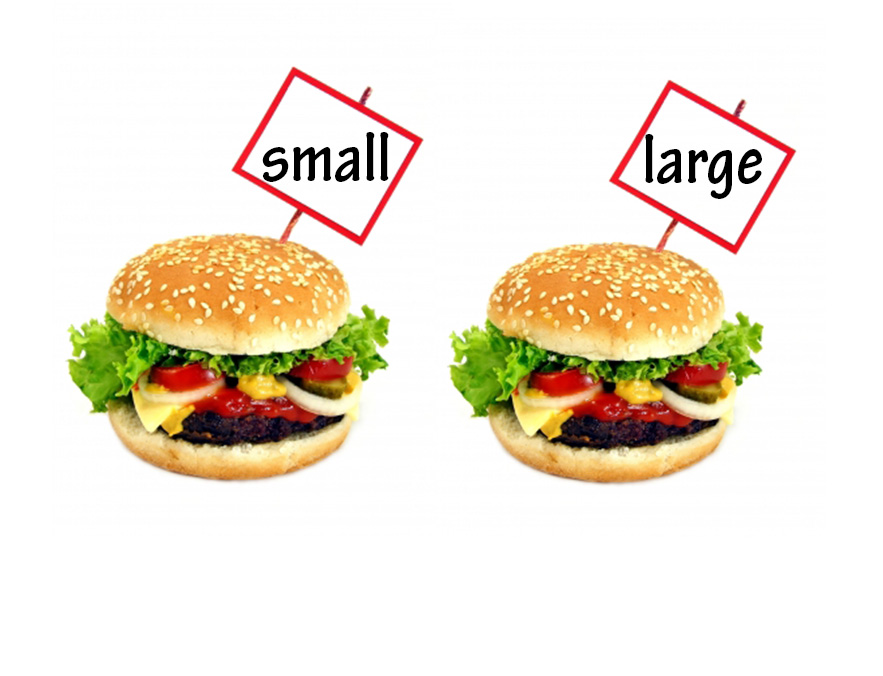Professor Krishna defines sensory marketing as “marketing that engages the consumers' senses and affects their perception, judgment and behavior (and suggests that) from a managerial perspective, sensory marketing can be used to create subconscious triggers that characterize consumer perceptions of abstract notions of the product (e.g., its sophistication or quality).”
Several important sensory marketing concepts have been developed from Professor Krishna's Sensory Marketing lab (you can read more in the People and Research page). Theoretical advancements include guiltless gluttony, smellizing, and dynamic imagery, just to mention a few.
Several important sensory marketing concepts have been developed from Professor Krishna's Sensory Marketing lab (you can read more in the People and Research page). Theoretical advancements include guiltless gluttony, smellizing, and dynamic imagery, just to mention a few.
|
Aydinoglu and Krishna (2011) show that food size labels (e.g., a large size portion of French fries being labeled medium) can result in people eating a lot while believing that they have not, and thus not feeling guilty about it (guiltless gluttony). This research has been reported in popular press accounts ranging from New York Times and Time, between others.
|
|
Smellizing is a term coined by Prof. Krishna (Krishna, Morrin and Sayin 2014) to reflect “imagining smells”. Krishna, Morrin and Sayin (2014) show that smellizing foods can result in similar physiological responses (such as salivation) as real smells, when a picture of the food is also available. Hear more about it clicking here (Michigan Radio interview).
|
|
Cian, Krishna, and Elder (2014) defined dynamic imagery as an image capability to evoke a perception of movement. They show that dynamic imagery is an important aspect of logo design, which affect consumer engagement and attitudes. In another research (2015), the same authors propose that dynamic imagery prepares the observer for action and can increase consumer responsible behavior. Operationalizing dynamic imagery within the traffic sign domain, the authors show how this construct can be used to reduce accident-related injuries and even mortality rates from traffic accidents.
|


